“Le, pakshi”
Thus said Lord Sri Rama to Jatayu, who was wounded by Ravana. It is at this place that Jatayu fell wounded with his wings clipped when he fought to stop Lanka king Ravana who was carrying away Sita, wife of Rama. When Rama reached this spot, he saw Jatayu and said compassionately to him, “Le, pakshi” — meaning “Rise, bird” in Telugu. The place where Jatayu fell came to be known as Lepakshi.
Lepakshi is a culturally, historically, and archaeologically significant village in Andhra Pradesh. In addition to the fame for its connection to Ramayana, Lepakshi is also famous for the Veerabhadra temple complex, protected by Archeological Survey of India as a monument of national importance. The temple complex was built in 1583 by brothers Virupanna and Veeranna during the reign of Vijayanagara King Achyuta Devaraya.
Lepakshi is an ultimate testimony for Vishwakarma brahmins who sculpted these temples. This temple serves as the best example and a tribute to the engineering genius of temple builders of ancient India. It is believed that noted Vishwakarma Amarashilpi Jakkanachari took part in planning the architecture of these temples. There are many shila shasanas (stone inscriptions) that the famous sculptors like Dakoju, Maroju took part in this temple sculpture. Puranas mention that the Veerabhadra temple was built by sage Agastya at the same spot where Jatayu attained salvation.
Veerabhadra temple
The Veerabhadra temple, built in the Vijayanagara style of architecture, is on Kurmashaila, a low altitude hillock of granite rock in the shape of a tortoise (Kurma). It is believed that the temple is built at the spot where Jatayu fell after being injured by Ravana. The presiding deity is Veerbhadra, a fiery form of Lord Shiva. Veerahadra was worshipped during wars in ancient and medieval periods as the warrior god. The temple complex has idols of Ganesha, Nandi, Veerabhadra, Shiva, Bhadrakali, Vishnu, and Lakshmi.
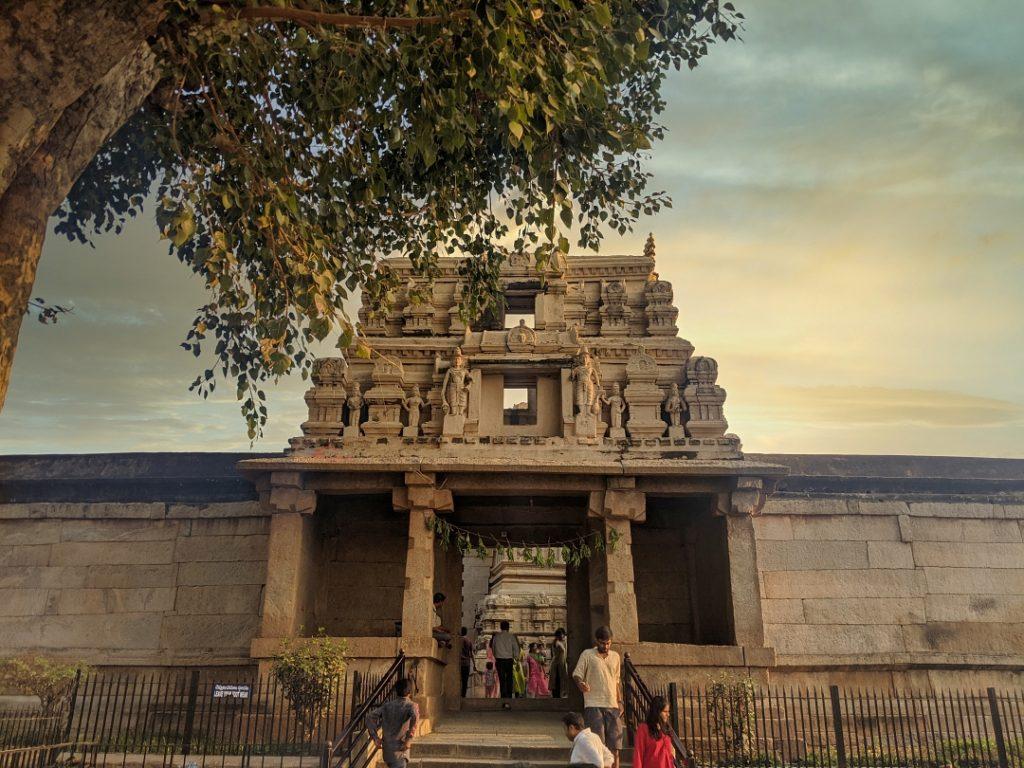
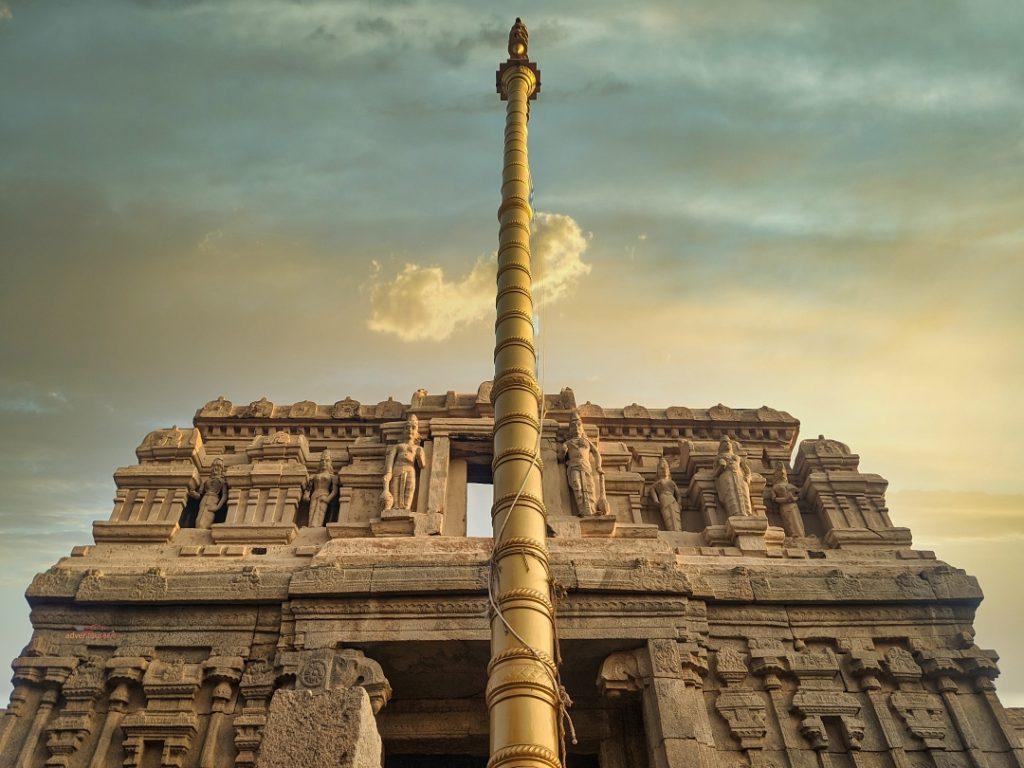
The main temple is laid out in three parts: (1) the assembly hall known as the mukha mantapa, natya mantapa, or ranga mantapa; (2) ardha mantapa or antarala (ante chamber connecting ranga mantapa and garbhagriha); and (3) the garbhagriha or the sanctum sanctorum.
The temple, as an edifice, is encircled by two enclosures. The outermost walled enclosure has three gates, the northern gate is used regularly. The inner east gate is the entry to the assembly hall, which is a large sized open hall designed with a large space in its central part.
Ranga mantapa
Ranga mantapa, also called as natya mantapa or dance hall, is the most remarkable part of Veerabhadra temple. The hall is reknowned for its 70 pillars, including the star attraction Akasha Stambha or popularly known as The Hanging Pillar. Ranga mantapa has intricately carved pillars, sculptures, and paintings that depict the unbelievable talent of the temple architects of the Vijayanagara era. This ancient temple has inscriptions on every pillar. The pillars of the mantapa will mesmerize you with life-like sculptures of gods and goddesses playing musical instruments and dancing. You can see Lord Shiva performing Ananda Tandava, Brahma playing the drum, Narada on tamburi/tambura, apsaras in dancing postures, and many divine artists playing drums and cymbals, creating a world full of divine melodies. The ceiling of the hall is covered with beautiful mural paintings depicting the scenes from Ramayana, Mahabharata, and puranas.
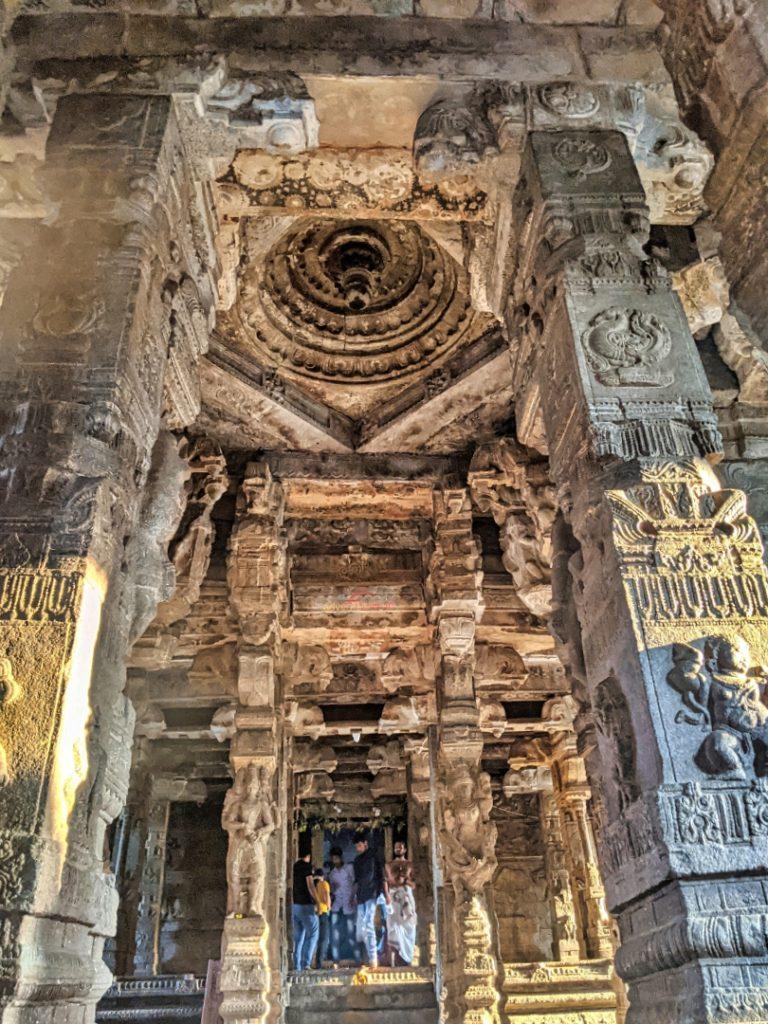





Ardha mantapa
There are sculptures of dwarapalaka on both sides of the entrance of ardha mantapa. The ceiling is adorned with beautiful frescoes of the 14 incarnations of Lord Shiva. The 24 x 14 feet fresco of Lord Veerabhadra on the ceiling is said to be the largest single fresco in India.
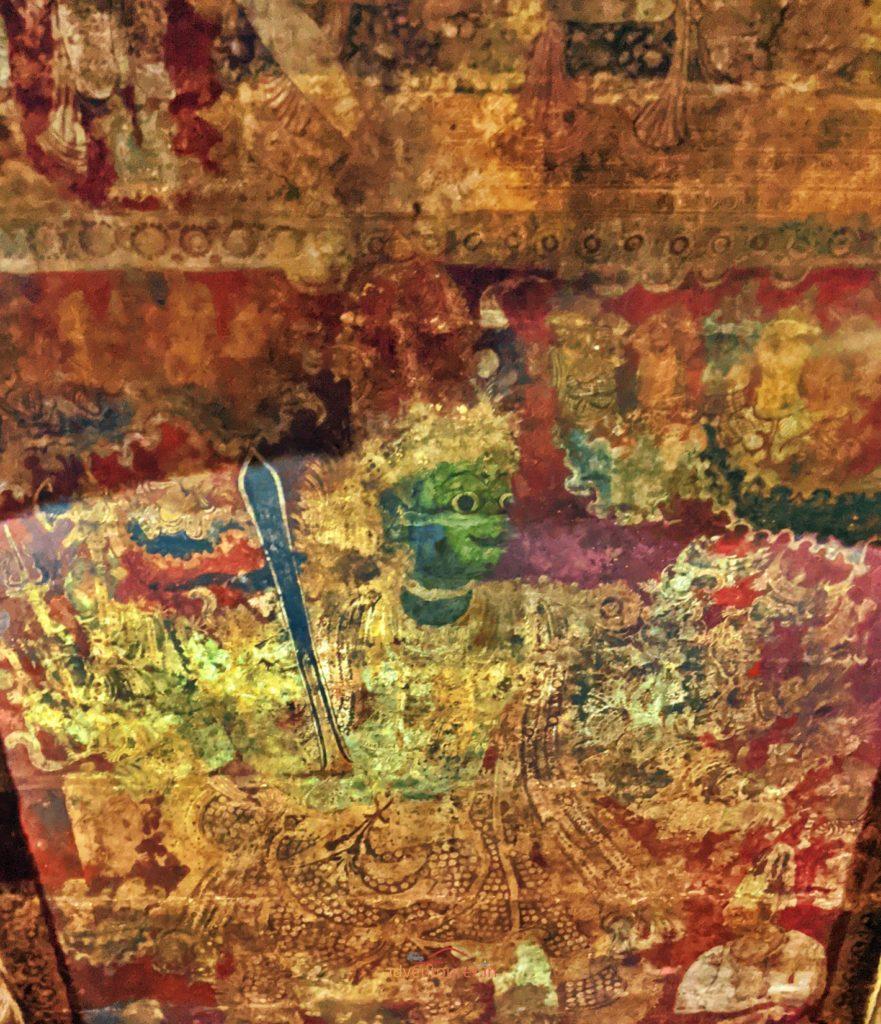
Garbhagriha
Sculptures of the goddesses Ganga and Yamuna flank the entrance to the sanctum. The presiding deity in the sanctum is a near life-size image of Veerabhadra, fully armed and decorated with skulls. There is a cave chamber in the sanctum where sage Agasthya is said to have lived when he installed the Linga here. The ceiling in the sanctum above the deity has paintings of the builders of the temple, Virupanna and Viranna, dressed regally and crowned with headgear. They are depicted as offering sacred ashes to their family deity.
Mural paintings
The mural paintings in each bay on the ceiling of Ranga mantapa, the antarala, and other shrines depict the grandeur of Vijayanagara pictorial art.
The mural paintings can be seen on ceiling of the Veerabhadra temple, mahamantapa of the Raghunatha temple, Parvathi temple, and shayana mandira (shayanagara).


Golden pillars
The warm glow from the setting sun creates a magic in the main hall: each and every pillar glows in all its ‘golden’ glory!
Read more: Stone pillars cast in gold.
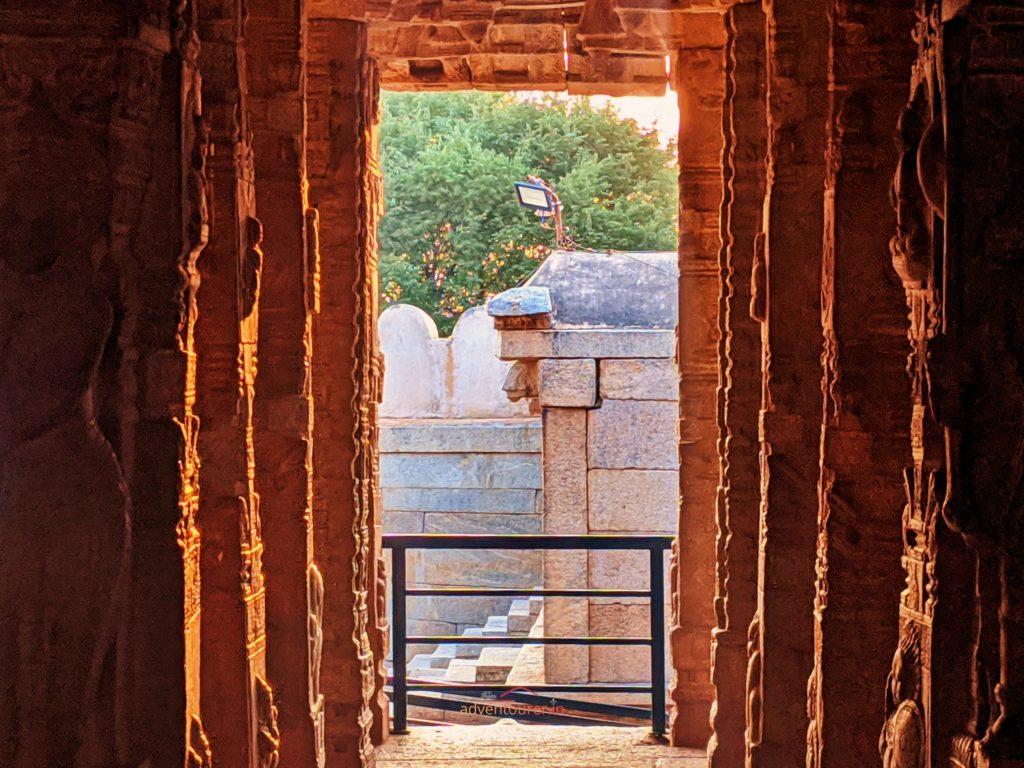
Hanging pillar
Of the 70 stone pillars supporting the roof, one of the pillars is the famous ‘hanging pillar’ that barely rests on the floor. There is a small gap between the floor and base of the pillar which gives the impression of the hanging pillar. It is possible to pass thin objects such as a sheet of paper or a piece of cloth from one side to the other.
Read more: Hanging pillar
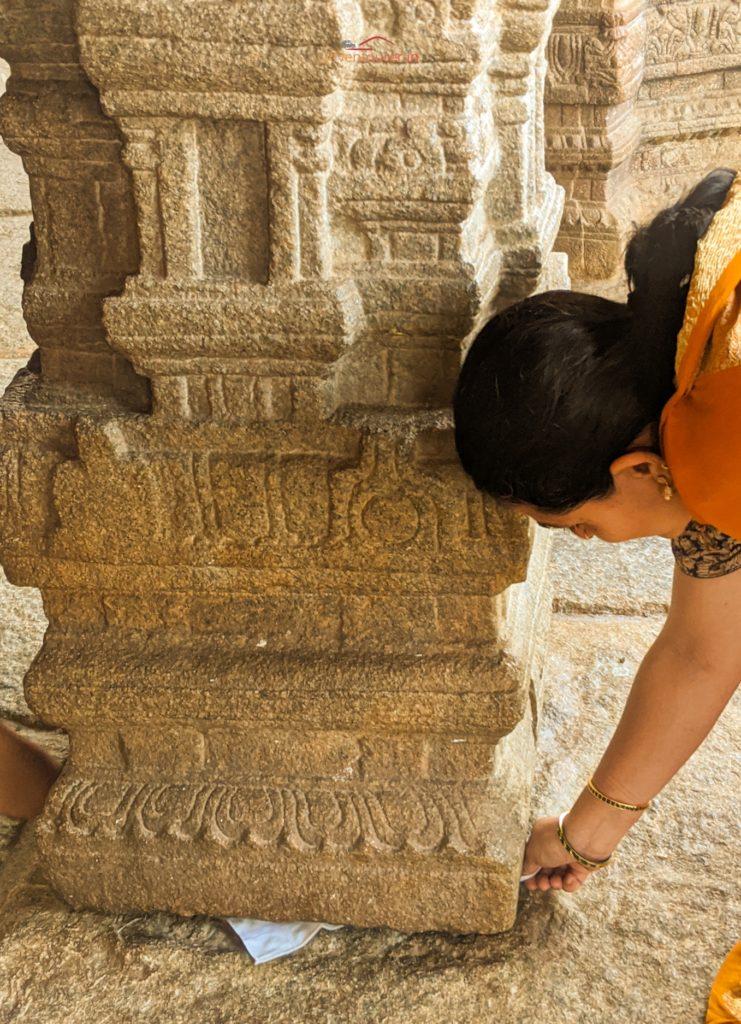
Nagalinga
The Shiva linga here adorned with three-coiled and seven-hooded naga prabhavali inside the Veerabhadra temple at Lepakshi. This beautiful monolithic sculpture is 15 feet tall, the biggest in India.
Read more: Lepakshi Nagalinga
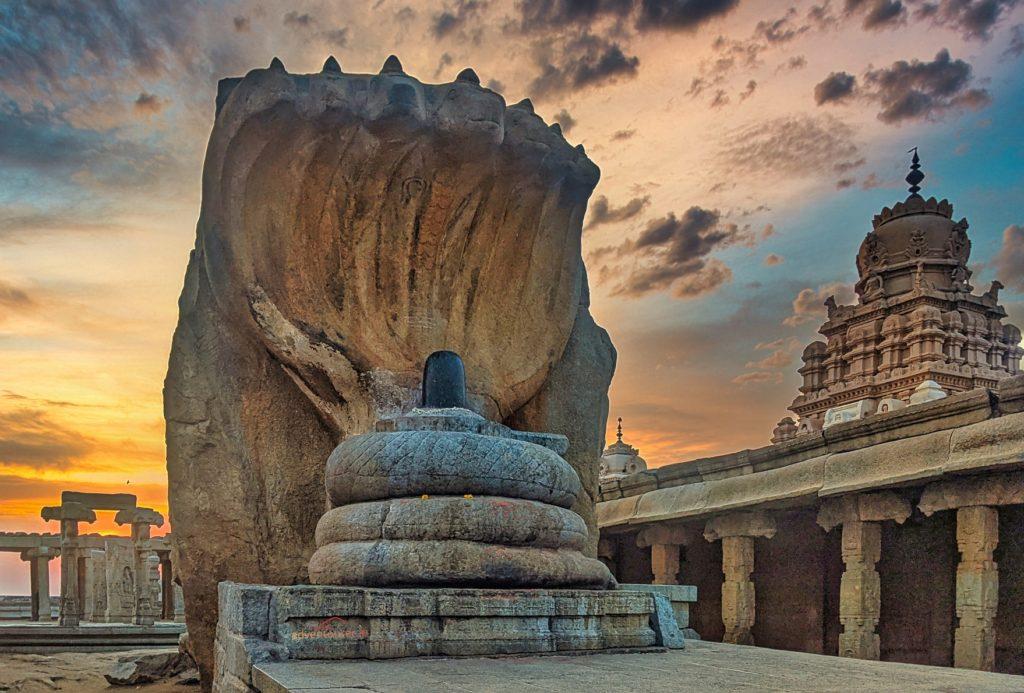
Ganesha
In the temple’s outer enclosure, you will see a mammoth Ganesha — sculpted in stone and leaning against a rock.
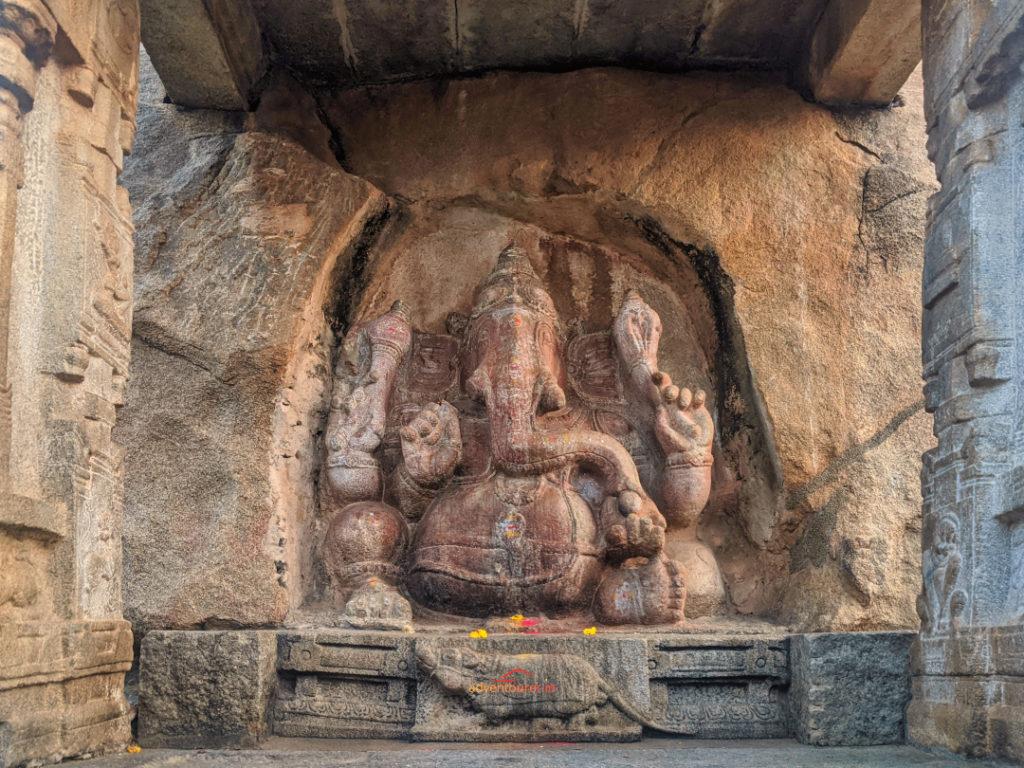
Unfinished kalyana mantapa
Kalyana mantapa or marriage hall is an open structure behind the main temple in the inner enclosure, which has 38 pillars with intricate carvings of several sages, gods, Dhanwanthari, and the 8 dikpalakas. The unfinished kalayana mantapa was built where Lord Shiva and Parvati were believed to have got married. Wonderful carvings depicting the marriage of Shiva and Parvati can be seen on the pillars.
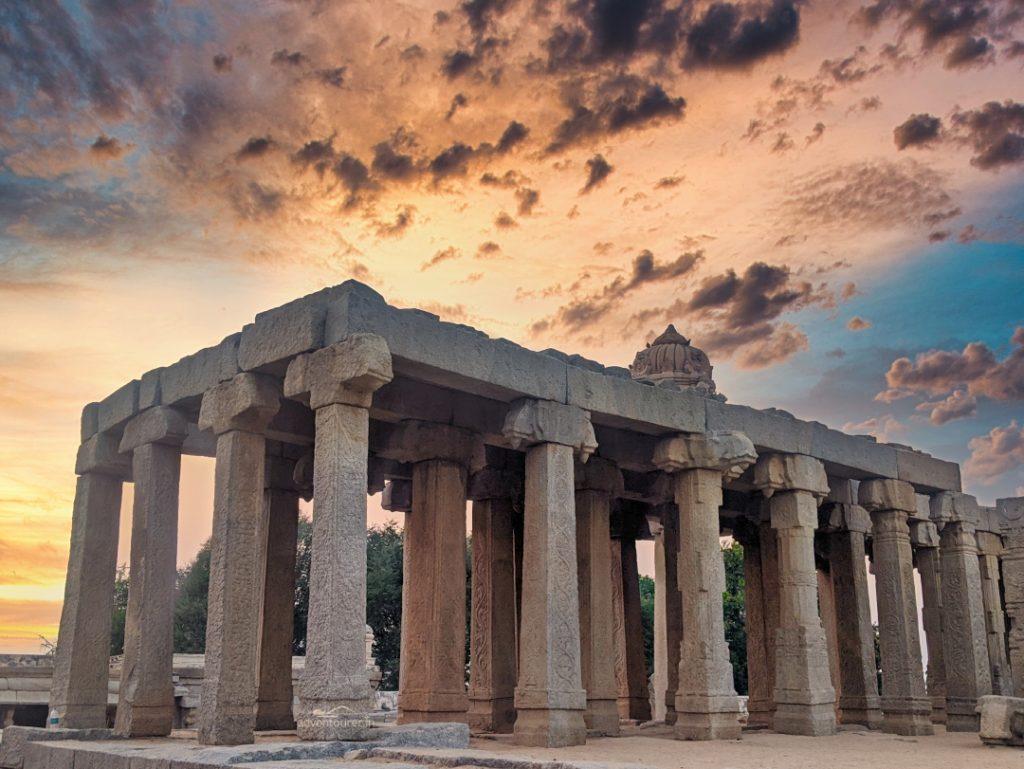
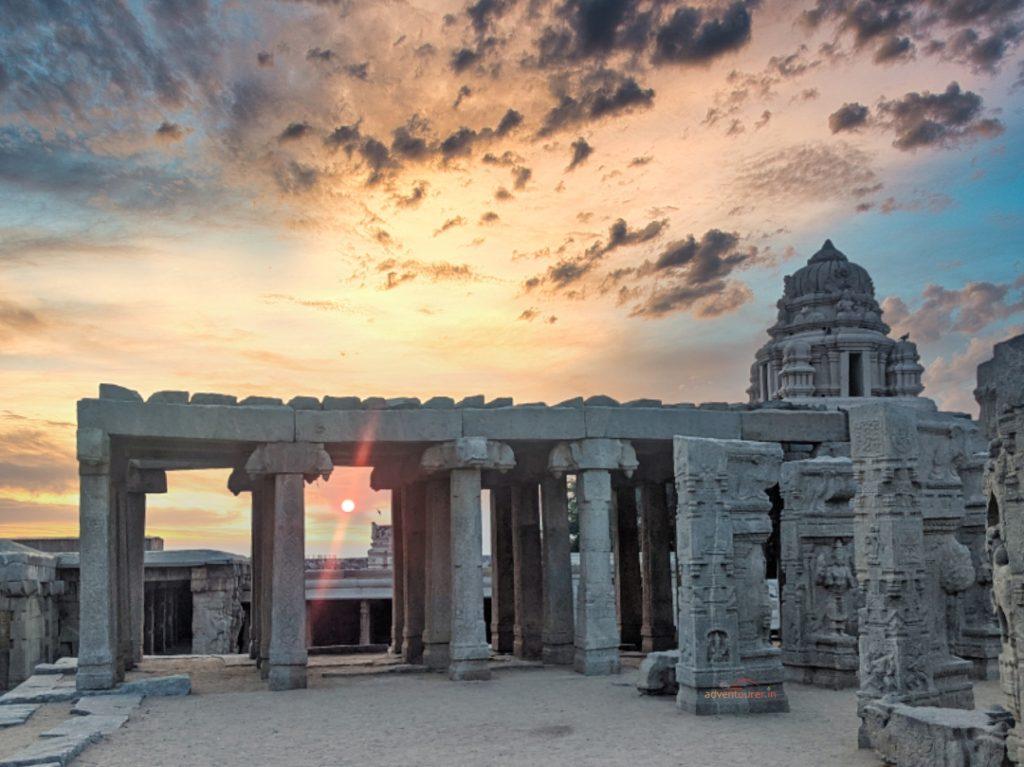
There is a legend behind the unfinished kalyana mantapa. Virupanna, the royal treasurer was alleged of cheating the king by utilizing the funds from the treasury without the King’s permission and the enraged king ordered Virupanna to be blinded. However, unable to bear the false accusation, Virupanna blinded himself and threw his eyes on the wall. Two red spots still seen on the wall near the Kalyana mantapa are said to be the marks left by his bleeding eye. “Lepa-akshi” also means “Blinded Eye”!
Lata mantapa
Near the kalyana mantapa, there is lata mantapa or the hall of creepers. There are about 30 pillars in this mantapa. Every pillar has a different pattern describing a particular flowering creeper/climber. Every pillar is distinct from the others, carved with some beautiful designs and intricate motifs of flowers and birds. These motifs are used in the famous sari border designs of Lepakshi. Hundreds of such designs can be seen on several pillars.
Durga paada/Sita paada
When you walk past the kalyana mantapa, you will see a huge footprint in the temple floor. Almost as if someone stamped with strength on the floor. This footprint is believed to be of Goddess Sita. According to the legend, Sita is said to have set foot here on the way to Lanka. Interestingly, this footprint is always wet. You can see water from underneath constantly seeping and washing this foot. Although, the source of this water is unknown. Yet, it is believed that since it is the footstep of the divine Goddess, the water appears magically as a sign of respect to her. If you try to dry or wipe out the water, it slowly seeps back into place.
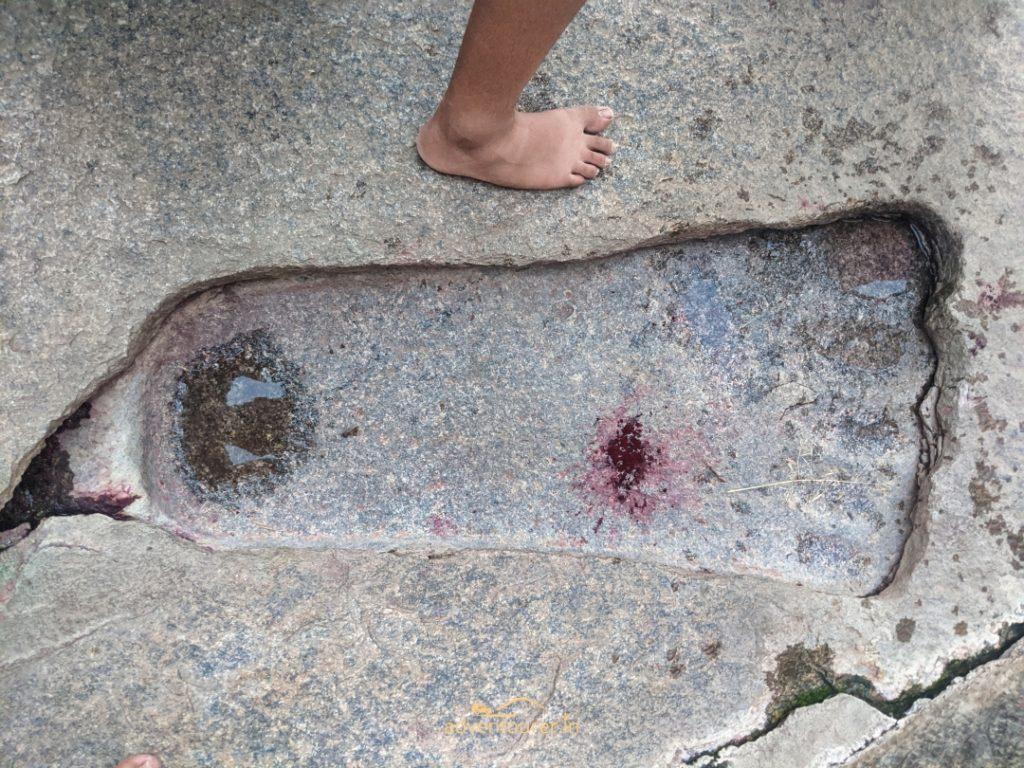
Monolithic Nandi
A huge granite Nandi (bull), 20 feet in height and 30 feet in length, bedecked with garlands and bells, carved out of a single block stone, is located about 200 metres from the main temple, which faces the Nagalinga in the Veerabhadra temple.
Quick tips
If you want to witness the stone pillars of the Veerabhadra temple turn to gold, stay till sun set. See Where stone pillars turn gold.
Lepakshi and Vidurashwatha are small villages. There are only small stalls with snacks and food items. Best is to carry your own food or eat at Gowribidanur/Doddaballapura/Hindupur (if visiting Vidurashwatha) or at many restaurants/dhabas along with Bangalore-Hyderabad highway (if visiting Lepakshi directly).
Explore Lepakshi
Lepakshi is at a distance of about 125 kms from Bangalore, little off from the Bangalore-Hyderabad highway. You can comfortably do a one-day trip to this place from Bangalore.
Location marker on Google map: https://goo.gl/maps/YgEeZgHJFfphjhaJA
How to reach
By car: Traveling by car is more convenient as you can cover other places of interest nearby/on the way. If traveling from Bangalore on the Hyderabad highway, turn left at Kodikonda checkpost and continue on Lepakshi road for about 15 kms. If traveling on the Bangalore-Hindupur highway, turn right at Hindupur and continue on Lepakshi road for about 20 kms. Parking is available near the temple.
By bus: There are frequent bus services to Hindupur and Penukonda/Bagepalli/Kodikonda checkpost from Bangalore and regular services from other parts of Karnataka and Andhra Pradesh. From here, change bus or take auto rikshaw to reach Lepakshi.
By train: There are regular train services to Hindupur and Penukonda from Bangalore. From here, board a bus or take auto rikshaw to reach Lepakshi.
Where to stay
Hindupur Tourism Complex offers excellent accommodation. Abhya Griha rest house at Lepakshi, maintained by the Andhra Pradesh State Tourism Department, the travellers’ bungalow at Hindupur, the PWD travellers’ bungalow at Demakepalli, 5 km from Lepakshi, and Andhra Pradesh Tourism’s motel at Hindupur are some of the options.
When to visit
The best time to visit Lepakshi is from September to February.
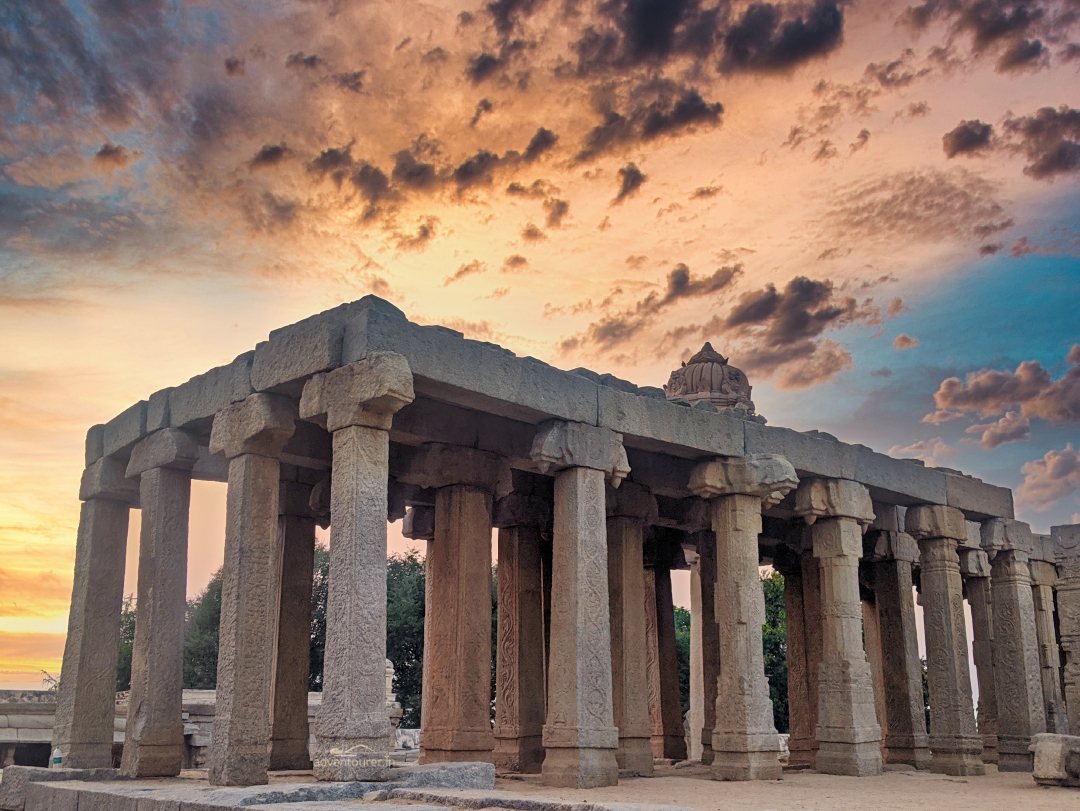
Super